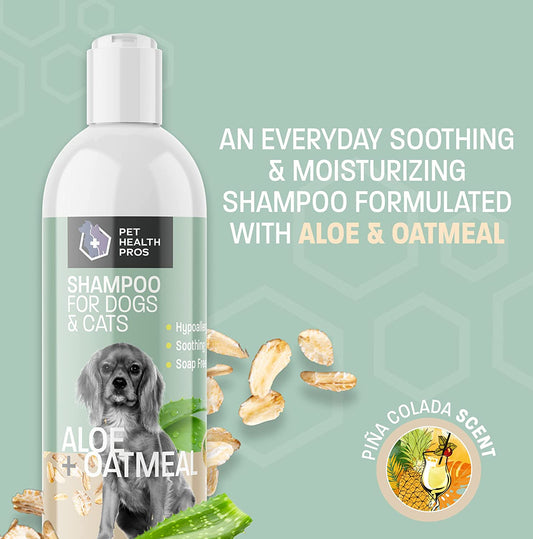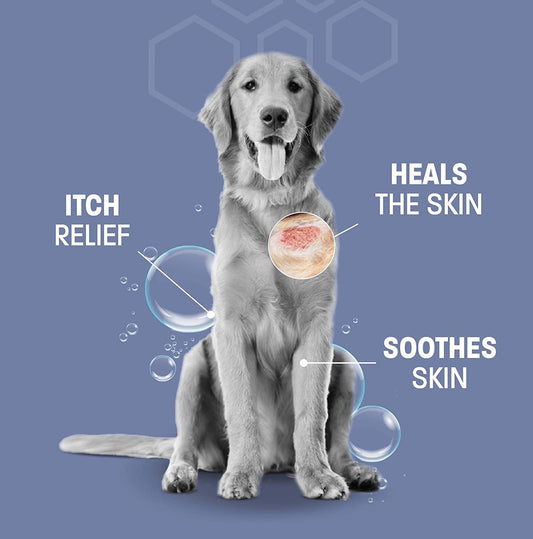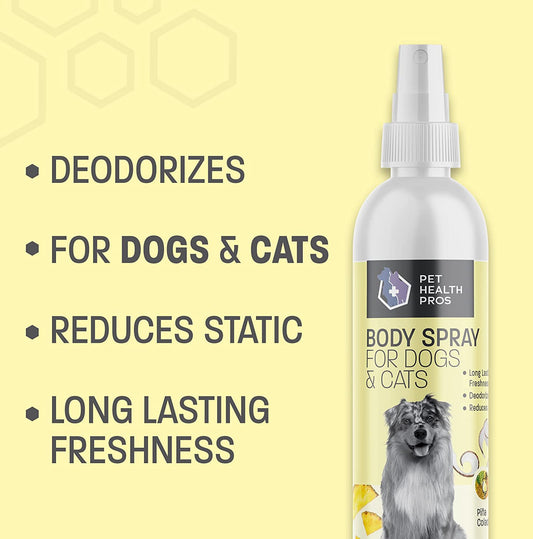Tear stains in dogs can be unsightly and may indicate underlying health issues. Fortunately, there are effective tear stain removers available to help eliminate these stains. In this article, we will explore the causes of tear stains, breeds prone to tear stains, and the health concerns associated with them. We will also discuss how to choose the right tear stain remover, including natural and chemical options. Additionally, we will provide some home remedies for tear stains and grooming practices to prevent them. Here are the key takeaways from this article:
Key Takeaways
- Tear stains in dogs can be caused by excessive tearing, blocked tear ducts, or certain health conditions.
- Breeds with short muzzles and excessive facial hair are more prone to tear stains.
- Tear stains can lead to skin irritation, infections, and discomfort for dogs.
- Natural tear stain removers like apple cider vinegar and coconut oil can be effective and gentle on sensitive dogs.
- Chemical tear stain removers may contain ingredients like hydrogen peroxide or antibiotics to target bacteria and stains.
Understanding Tear Stains in Dogs
Causes of Tear Stains
Tear stains in dogs are a common issue that many pet owners face. These stains are caused by the excessive tearing of the eyes, which can be attributed to various factors. Genetics play a significant role in the development of tear stains, as certain breeds are more prone to this condition. Additionally, eye anatomy can also contribute to tear stains, as dogs with shallow eye sockets or prominent eyes are more likely to experience excessive tearing. Other factors such as eye infections, allergies, and irritants can also lead to tear stains.
Breeds Prone to Tear Stains
Certain dog breeds are more prone to tear stains than others. These breeds often have a combination of factors that contribute to tear staining. Some of the breeds that are commonly affected by tear stains include Maltese, Shih Tzu, Poodle, Bichon Frise, and Yorkshire Terrier. These breeds have certain characteristics that make them more susceptible to tear staining, such as excessive tearing, shallow eye sockets, and hair that grows close to the eyes.
Health Concerns Associated with Tear Stains
Tear stains in dogs can be more than just a cosmetic issue. They can also indicate underlying health concerns that need to be addressed. One important health concern associated with tear stains is the risk of eye infections. The excessive tearing that leads to tear stains can create a moist environment around the eyes, which can attract bacteria and lead to infections. It's important to keep the area around the eyes clean and dry to minimize the risk of infections.
In addition to eye infections, tear stains can also be a sign of allergies or irritations. Some dogs may develop tear stains as a result of allergies to certain foods or environmental factors. If your dog has tear stains, it's worth considering if there are any potential allergens in their diet or surroundings that could be causing the issue. Consulting with a veterinarian can help identify and address any underlying allergies or irritations.
To effectively manage tear stains and prevent associated health concerns, it's important to choose the right tear stain remover and implement proper grooming practices. By addressing tear stains promptly and taking proactive measures, you can help keep your dog's eyes healthy and free from infections.
Choosing the Right Tear Stain Remover
Natural Tear Stain Removers
Natural tear stain removers are a popular choice for dog owners who prefer a more holistic approach to grooming. These products are made from natural ingredients that are gentle on the skin and safe for regular use. One key ingredient found in many natural tear stain removers is witch hazel, which has astringent properties that help to reduce inflammation and soothe the skin around the eyes. Other natural ingredients commonly used in tear stain removers include chamomile, aloe vera, and coconut oil.
When using natural tear stain removers, it's important to follow the instructions provided by the manufacturer. Some products may need to be applied directly to the tear stains and left on for a certain amount of time before being wiped away. Others may require regular use over a period of time to see noticeable results. It's also important to note that natural tear stain removers may not work for all dogs, and it may take some trial and error to find the right product for your pet.
Chemical Tear Stain Removers
Chemical tear stain removers are another option for removing tear stains in dogs. These products are specifically formulated to break down and remove the discoloration-causing particles around the eyes. One popular chemical tear stain remover is Burt's Bees for Pets Tear Stain Remover for Dogs with Chamomile. This unique formula contains wholesome ingredients like chamomile, which helps to effectively remove tear stains. It is important to follow the instructions provided by the manufacturer when using chemical tear stain removers to ensure safe and effective use.
Considerations for Sensitive Dogs
When choosing a tear stain remover for sensitive dogs, it's important to consider their specific needs. Gentle and natural tear stain removers are often the best option for dogs with sensitive skin or allergies. These products are formulated with mild ingredients that are less likely to cause irritation or adverse reactions.
To ensure the safety and effectiveness of the tear stain remover, it's recommended to:
- Consult with a veterinarian before using any new product on your dog.
- Read the product label carefully to check for any potential allergens or irritants.
- Perform a patch test on a small area of your dog's skin to check for any adverse reactions.
Remember, every dog is unique, and what works for one may not work for another. It's important to monitor your dog's reaction to the tear stain remover and make adjustments as needed.
Tip: If your dog experiences any discomfort or irritation after using a tear stain remover, discontinue use and consult with your veterinarian for alternative options.
Home Remedies for Tear Stains
Apple Cider Vinegar Solution
Apple cider vinegar is a popular home remedy for treating tear stains in dogs. It is believed to help balance the pH levels in the body and reduce the appearance of tear stains. To use apple cider vinegar as a tear stain remover, mix equal parts of apple cider vinegar and water. Gently apply the solution to your dog's tear stains using a clean cloth or cotton ball. Be careful not to get the solution in your dog's eyes. Repeat this process daily until the tear stains fade.
Coconut Oil Treatment
Coconut oil is a popular natural remedy for tear stains in dogs. It has antimicrobial properties that can help reduce the growth of bacteria and yeast that contribute to tear stains. Applying coconut oil to the affected area can help moisturize the skin and reduce irritation. It is important to note that coconut oil should be used sparingly and not applied directly to the eyes.
Coconut oil can be used as a standalone treatment or in combination with other natural ingredients. Some dog owners have found success by mixing coconut oil with a small amount of apple cider vinegar or chamomile tea to create a soothing solution. It is recommended to consult with a veterinarian before starting any new treatment to ensure it is safe for your dog.
Here is a table summarizing the benefits of coconut oil treatment for tear stains:
| Benefits of Coconut Oil Treatment |
|---|
| Natural remedy |
| Antimicrobial properties |
| Moisturizes the skin |
| Reduces irritation |
Remember, consistency is key when using coconut oil or any other tear stain remover. Regular application and proper grooming practices can help effectively manage tear stains in dogs.
Chamomile Tea Rinse
Chamomile tea is a popular natural remedy for tear stains in dogs. The soothing properties of chamomile can help reduce inflammation and irritation around the eyes. To make a chamomile tea rinse, steep a chamomile tea bag in hot water for a few minutes. Allow the tea to cool completely before using it. Gently apply the cooled tea to your dog's tear-stained fur using a clean cloth or cotton ball. Repeat this process daily to help lighten and remove tear stains.
Grooming Practices to Prevent Tear Stains
Regular Eye Cleaning
Regular eye cleaning is an essential part of maintaining your dog's eye health. It helps remove dirt, debris, and tear stains that can accumulate around the eyes. To clean your dog's eyes, follow these steps:
- Prepare a clean, damp cloth or eye wipe.
- Gently wipe the area around your dog's eyes, starting from the inner corner and moving outward.
- Be careful not to touch the eyeball or apply too much pressure.
- Use a separate cloth or wipe for each eye to prevent the spread of any potential infections.
Tip: If your dog has excessive tear staining, it's important to consult with a veterinarian to rule out any underlying health issues.
Trimming Facial Hair
Trimming the facial hair of your dog is an important grooming practice to prevent tear stains. Excess hair around the eyes can trap tears and create a breeding ground for bacteria, leading to tear stains. Regular trimming of the hair around the eyes can help keep the area clean and reduce the risk of tear stains. It is recommended to use rounded-tip scissors specifically designed for trimming facial hair to avoid any accidents or injuries to your dog's eyes.
Using Tear Stain Wipes
When it comes to removing tear stains from your dog's face, Tear Stain Wipes can be a convenient and effective solution. These specially formulated wipes are designed to gently clean the area around your dog's eyes, removing tear stains and preventing their recurrence.
One of the advantages of using Tear Stain Wipes is their ease of use. Simply take a wipe and gently wipe the area around your dog's eyes, being careful not to get any product in their eyes. The wipes are soft and gentle, making them suitable for dogs with sensitive skin.
Benefits of Using Tear Stain Wipes:
- Convenient and easy to use
- Gentle on your dog's skin
- Effectively removes tear stains
- Helps prevent tear stains from coming back
Tip: For best results, use Tear Stain Wipes regularly as part of your dog's grooming routine.
By incorporating Tear Stain Wipes into your dog's grooming routine, you can help keep their face clean and free from unsightly tear stains.
Tear stains are a common problem for many pet owners. These unsightly stains can occur around the eyes of dogs and cats, and they can be difficult to remove. However, with the right grooming practices, you can prevent tear stains from forming in the first place. One important step is to regularly clean your pet's face with a gentle cleanser. This will help to remove any dirt or debris that could contribute to tear stains. Additionally, you should make sure to keep your pet's eyes clean and free of discharge. Regularly wiping the area with a damp cloth can help to prevent tear stains. Another important grooming practice is to trim the hair around your pet's eyes. Excess hair can trap moisture and bacteria, leading to tear stains. By keeping the hair short, you can reduce the risk of tear stains. Finally, it's important to feed your pet a balanced diet that is free of artificial additives and preservatives. A healthy diet can help to prevent tear stains and promote overall eye health. For all your pet health needs, visit Pet Health Pros, where you can find affordable, top-grade pet health supplies made in the USA. Shop with confidence knowing that our products are backed by a 100% satisfaction guarantee.
Conclusion
In conclusion, finding an effective tear stain remover for dogs can be a challenging task. However, with the right knowledge and understanding of the different options available, you can help your furry friend maintain a clean and healthy appearance. Remember to consult with your veterinarian before trying any new products, and always prioritize your dog's comfort and well-being. By following these guidelines, you can ensure that your dog's tear stains are effectively managed, allowing them to live a happy and tear-stain-free life.
Frequently Asked Questions
What are tear stains in dogs?
Tear stains in dogs are dark streaks or stains that appear under the eyes. They are caused by excessive tearing and can be a result of various factors.
What causes tear stains in dogs?
Tear stains in dogs can be caused by a number of factors, including genetics, eye infections, allergies, blocked tear ducts, and certain health conditions.
Are certain dog breeds more prone to tear stains?
Yes, certain dog breeds are more prone to tear stains. Breeds with prominent facial folds or hair around the eyes, such as Shih Tzus, Maltese, and Poodles, are more likely to develop tear stains.
Are tear stains in dogs a health concern?
While tear stains themselves are not usually a health concern, they can be a sign of underlying health issues. It is important to monitor your dog's tear stains and consult a veterinarian if they are persistent or accompanied by other symptoms.
What are natural tear stain removers for dogs?
Natural tear stain removers for dogs include ingredients like apple cider vinegar, coconut oil, and chamomile tea. These natural remedies can help reduce tear stains without harsh chemicals.
Are chemical tear stain removers safe for dogs?
Chemical tear stain removers can be effective, but it is important to choose products that are specifically formulated for dogs and are safe for use around the eyes. Always follow the instructions provided by the manufacturer.









